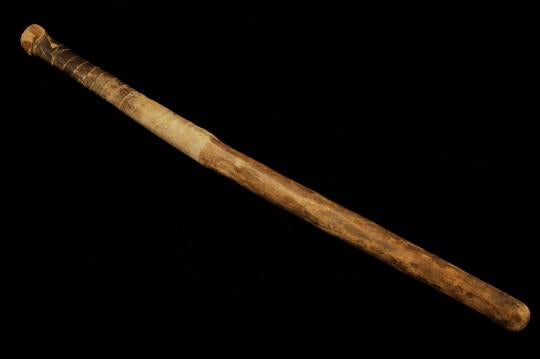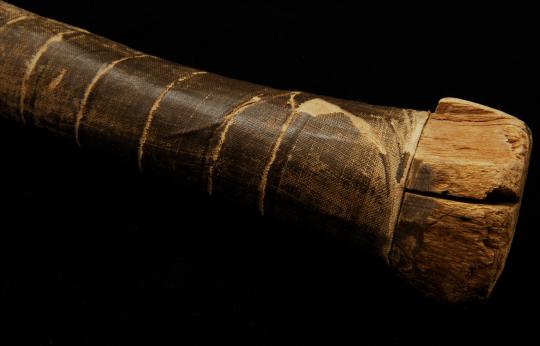- Home
- Our Stories
- #Shortstops: Bat for a Cause
#Shortstops: Bat for a Cause
When Americans were held captive during World War II, they looked toward their national pastime to get through the darkest days. It didn’t matter if they were playing with makeshift equipment on a temporary field, because the game itself tied them to the life they had stripped away.
The National Baseball Hall of Fame and Museum tells that story of the last 200 years in America through baseball and artifacts such as jerseys, balls, and of course bats. Many of the Museum’s bats were once wielded by players whose names are easily recognizable. Yet perhaps the bat in the Museum’s collection that stitches together the stories of baseball and America better than any is a misshapen, cracked old tree limb used by 130 Americans citizens in the 1940s.
When the United States entered World War II in late 1941, it took less than 10 days for the Nazi SS officers to round up American diplomats and members of the press in Berlin and take them hostage at the Grand Hotel in Bad Nauheim as prisoners of war. With a cloud of uncertainty regarding their future ever looming over them, the detainees decided that baseball might bring a sense of comfort and connection to home.
Angus Thuermer, who would later go on to donate the bat to the Museum, came upon a fallen tree branch one day while on a walk around the Grand Hotel. Fellow prisoner Glen Stadler used his knife to carve it into a bat. Fashioning baseballs from champagne corks wrapped in socks and finding orange crates and mail packages for bases, the American prisoners planned and participated in their very own four-team ‘Wurlitzer Cup’ during their mandated daily exercise time while armed Gestapo guards looked on.
Ken Meifert, the vice president of sponsorship and development at the National Baseball Hall of Fame and Museum, regards the Bad Nauheim bat as one of his favorite artifacts of the roughly 40,000 in the Museum’s collection.
“When you think about these Americans trapped in this incredibly frightening situation playing baseball with handmade equipment to provide some sense of hope and a connection to him, it clearly demonstrates that the game is our national pastime,” Meifert said.
Meifert’s sentiment echoes that of Thuermer, who upon returning home following a prisoner exchange between the United States and Nazi Germany was asked about playing baseball while imprisoned by the Nazis. He simply stated: “It’s unconstitutional not to play baseball”.
This sentiment toward baseball at this time was not exclusive to those imprisoned in Bad Nauheim.
During this dark chapter in United States history, Japanese Americans were forced into internment camps back on the home front. No matter the way in which the government at the time wanted to categorize them, these were still most definitely Americans. With their lives stripped away from them by their own government, baseball was the only place where these people felt like they could have control. So they etched fields into the hard southwest soil and formed leagues amongst internment camps.
Americans detained by their own country sought out baseball as the only place where they felt like they could have control the same way their fellow countrymen sought out the game while they were detained by Nazis. Perhaps the mirroring narratives of using baseball to get through imprisonment bridges the gap between the differences we see in America, showing how important to the story of American baseball really is.
Chris Wright was a 2022 public programs intern in the Hall of Fame’s Frank and Peggy Steele Internship Program for Youth Leadership Development
Related Stories

Team Tours of Japan bridged cultural gap following World War II
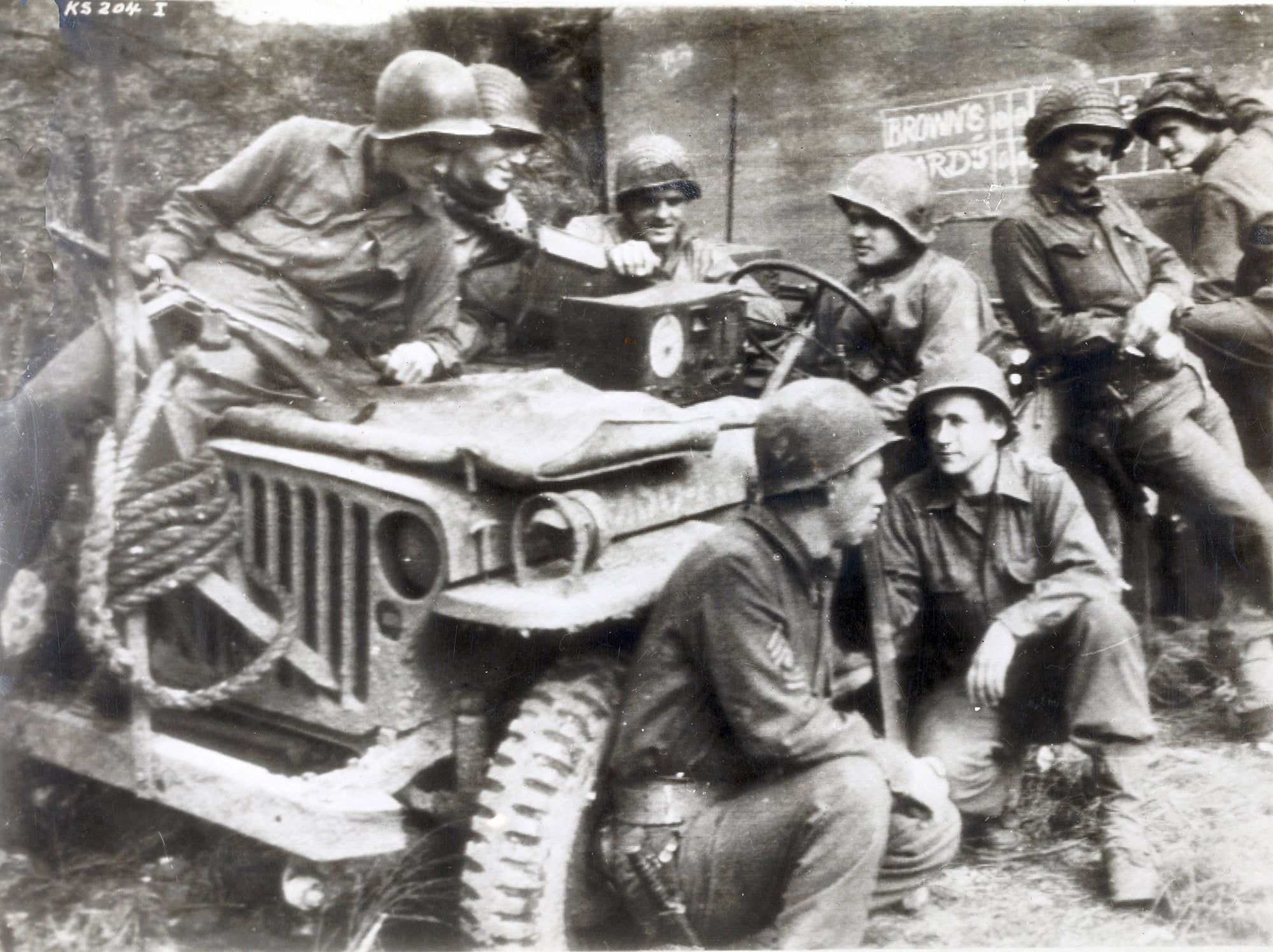
#Shortstops: War and the World Series
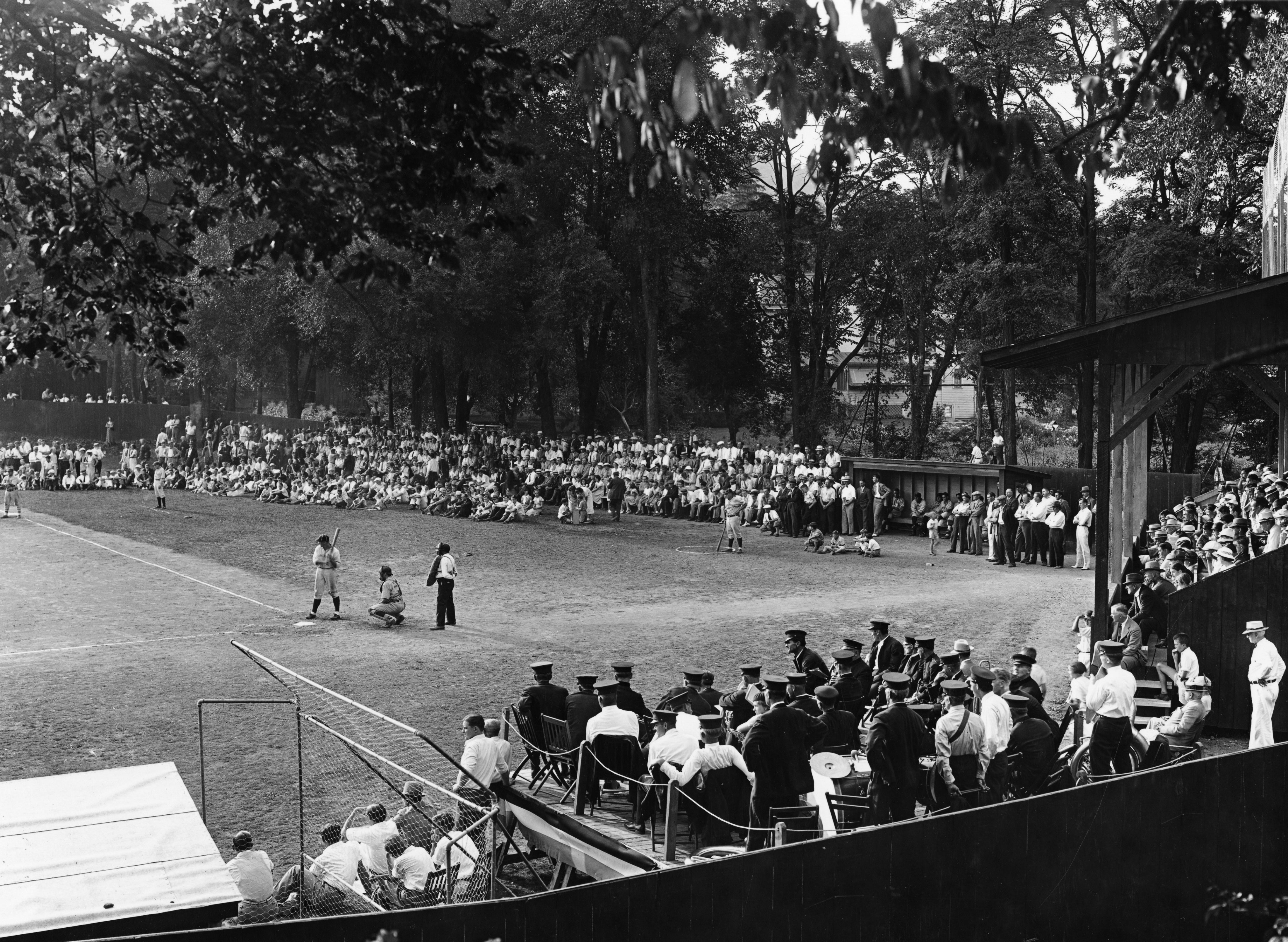
World War II hero’s legacy lives on in Cooperstown
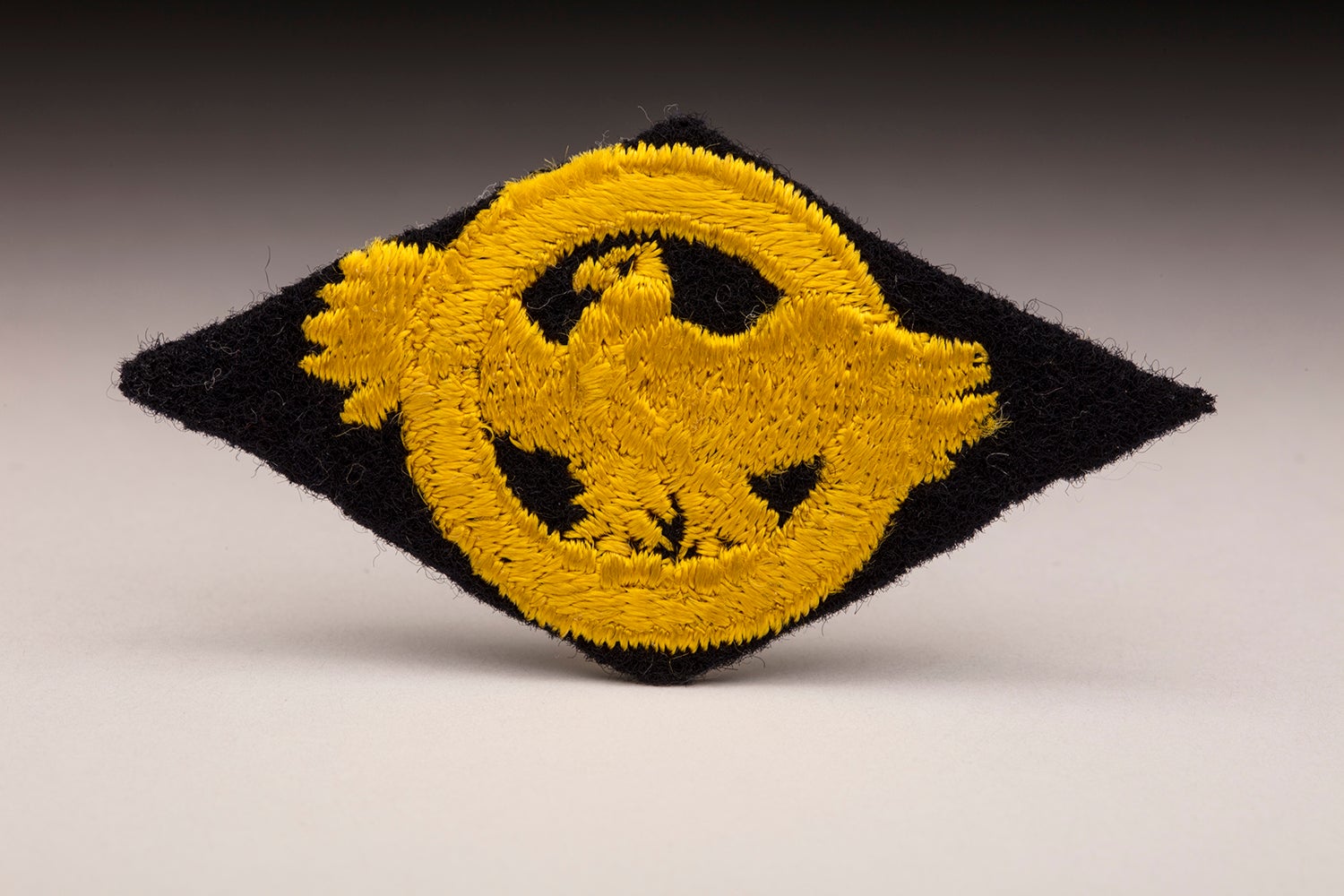
‘Ruptured Duck’ patch honored soldiers, including ballplayers, who served in World War II

Team Tours of Japan bridged cultural gap following World War II

#Shortstops: War and the World Series

World War II hero’s legacy lives on in Cooperstown


